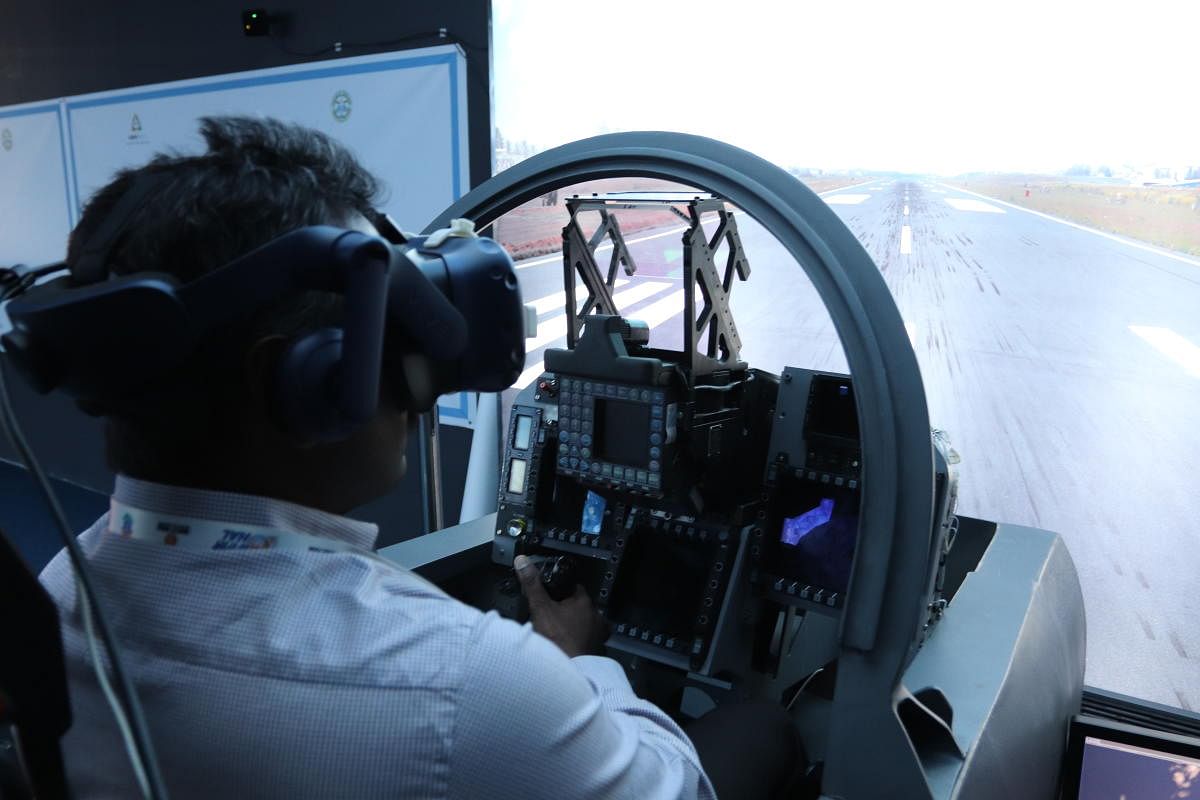
Her face taut with stress and anticipation, a middle-aged woman tries her hand at flying a Tejas fighter jet simulator. The virtual aircraft goes into a fatal spin.
Installed by the Bengaluru-based Aeronautical Development Agency (ADA), the cockpit demonstrator model, which is a mockup of an actual Tejas cockpit but outfitted with a full set of operational instruments and gauges, is tied to a virtual computer simulation which is projected onto a wall in front of the mockup.
The installation not only showcases the work of the agency, but can also give the public an impression of how pilots operate a Tejas aircraft, said ADA senior scientist, Suresh Kumar P. “Through this installation, the common man can experience the business of operating fighter aircraft. By understanding how the cockpit works, the public can see the challenges of building this technology,” Kumar added.
Ashwin Ganesh, a 22-year-old mechanical engineer, was more successful in his use of the simulator.
“The simulator was pretty good,” Ashwin said. “I felt comfortable operating the simulator but that may be because I used to play a lot of games and flight simulators when I was younger. Truth be told, the simulator was child’s play, but I was conscious of people watching me, ”
ADA staff expressed the hope that their work will inspire people, especially students to get a first-hand view of what a fighter aircraft’s cockpit is like. But the Agency also showcased its more serious work. At another Tejas cockpit mockup, users donned a virtual-reality helmet intended to test the ergonomic convenience of the layout of instruments and gauges in the cockpit. This mockup, which is slaved to a virtual-reality helmet, is used by test pilots to suggest improvements to the efficiency of the cockpit.
“With flight instruments capable of being moved around, test pilots can request design changes to improve layout of the cockpit. In this way, through the use of a virtual environment, we have the capability to finalise the cockpit designs of future aircraft without a prototype having never left the ground,” Kumar said. According to the Agency, development of the Tejas cockpit alone created an entire range of sub-industries, ensuring that the Indian aviation industry will one day become completely self-reliant.